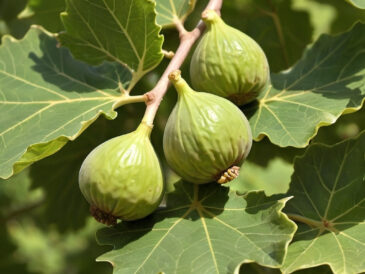Blueberries are not only delicious but also packed with antioxidants, vitamins, and fiber, making them a superfood worth including in your diet. While buying blueberries from the store can be convenient, it can also be costly, especially if you consume them regularly. Luckily, with a little effort and the right techniques, you can grow your own supply of fresh, organic blueberries at home. This guide will provide you with detailed methods to cultivate a never-ending supply of blueberries, whether you have a large garden or just a small balcony.
Understanding Blueberry Plants
Before diving into the methods, it’s essential to understand the basics of blueberry plants. Blueberries are perennials, meaning they come back year after year. They thrive in acidic soil (pH between 4.5 and 5.5) and require full sun for the best fruit production. There are several types of blueberry plants, including:
- Highbush Blueberries (Vaccinium corymbosum): Common in home gardens, they grow tall and produce large berries.
- Lowbush Blueberries (Vaccinium angustifolium): These are smaller, wild blueberries that grow close to the ground.
- Rabbiteye Blueberries (Vaccinium ashei): Native to the southeastern United States, they are heat-tolerant and produce large berries.
Each type has specific growing requirements, but the methods for establishing a continuous supply are largely the same.
Method 1: Growing Blueberries from Seed
Growing blueberries from seed is a long-term investment, as it can take several years for the plants to mature and bear fruit. However, it’s a rewarding way to start your own blueberry garden.
Steps:
- Collecting Seeds:
- Purchase fresh, organic blueberries or gather them from a trusted source.
- Mash the berries in a bowl and cover them with water. Let the mixture sit for a few days, stirring occasionally. The pulp will ferment, and the viable seeds will sink to the bottom.
- Extracting and Cleaning Seeds:
- Pour off the top layer of pulp and water. Rinse the seeds thoroughly in a fine sieve to remove any remaining pulp.
- Cold Stratification:
- To simulate winter conditions, place the cleaned seeds in a damp paper towel or a small container with a moist growing medium (like peat moss). Seal them in a plastic bag and store them in the refrigerator for 90 days. This process, known as stratification, is necessary for seed germination.
- Planting Seeds:
- After stratification, sow the seeds in a seed tray or small pots filled with acidic seed-starting mix. Cover them lightly with soil and mist with water.
- Place the tray or pots in a warm, bright location. Keep the soil moist but not waterlogged.
- Transplanting:
- Once seedlings are large enough to handle and have developed several sets of leaves, transplant them into larger pots or directly into the garden. Ensure the soil is acidic and well-drained.
Method 2: Propagating Blueberries from Cuttings
Propagation from cuttings is a faster way to establish blueberry plants, as it bypasses the seed germination stage. This method is effective for reproducing a particular variety of blueberry with desirable traits.
Steps:
- Selecting Cuttings:
- In late winter or early spring, select healthy, disease-free stems from an existing blueberry plant. Look for wood that is one year old (it will be firm and not green).
- Preparing Cuttings:
- Cut sections about 6 inches long, each with at least two leaf nodes. Remove any flowers or fruit.
- Rooting Hormone (Optional):
- Dip the cut end of each cutting into rooting hormone to encourage root development.
- Planting Cuttings:
- Plant the cuttings in pots filled with a mixture of peat moss and perlite or another well-draining, acidic medium. Insert them about halfway into the soil.
- Creating a Humid Environment:
- Cover the pots with a plastic dome or bag to maintain high humidity. Place them in a bright, indirect light area.
- Transplanting:
- After several weeks, check for root development by gently tugging on the cuttings. Once well-rooted, transplant them into larger pots or the garden.
Method 3: Container Growing for Limited Spaces
For those with limited garden space or urban dwellers, growing blueberries in containers is an excellent solution. Containers allow you to control soil conditions and are mobile for optimal sun exposure.
Steps:
TO CONTINUE READING PLEASE SEE NEXT PAGE




